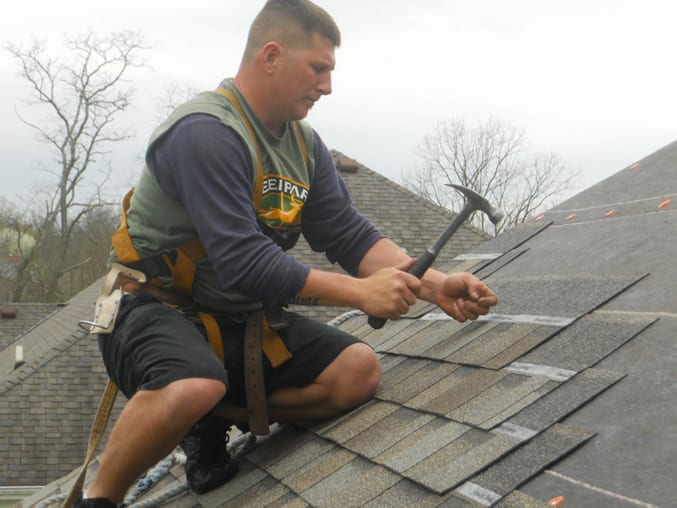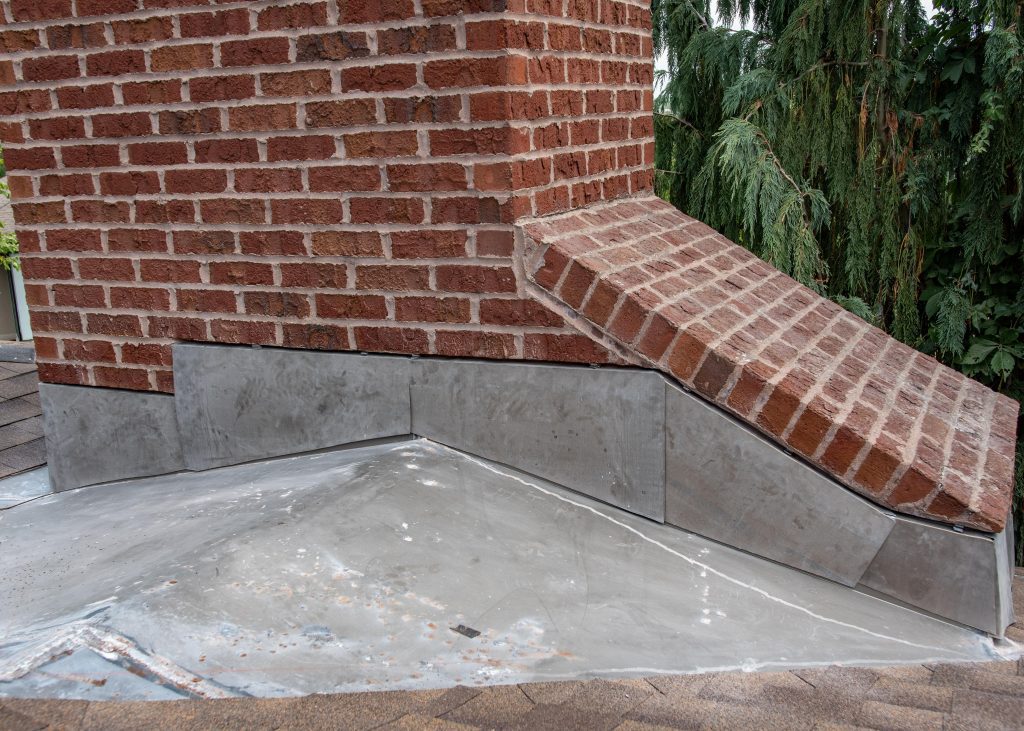
Shingle Installation Methods: Hand Nailing vs. Nail Gun
Which Shingle Installation Method is Better – Hand Nailing or Nail Gun?
The question is often asked as to which nailing method will yield the best results when installing a new roof. Is it better to fasten the shingles by hand nailing or using a pneumatic nail gun? The answer is not simple because both methods of installing the shingles have strengths and weaknesses. It is important to determine the correct answer on a roof to roof basis instead of (predetermined) installer preference. Factors that should be considered prior to installation of the roof system include the following:
Roof Sheathing
The type of sheathing and condition of the wood deck are important factors in determining how a new roof system should be fastened to the sheathing. Residential roof decks in the Cincinnati/Northern Kentucky areas almost always consist of wood sheathing. The most common construction types are plywood, OSB, 1″ x 6″ planks, and 1″ x 10″ planks. Newer homes usually consist of plywood or OSB roof sheathing while those built prior to 1970 may have sheathing consisting of 1″ x 6″ (or greater) planks. After an old roof system is removed, a roofing contractor will inspect the roof deck to determine if the sheathing is in good condition or if any of it should be replaced. Damaged wood will not be able to accept a nail driven with a hammer or a nail gun. After all damaged wood is replaced, the deck should be inspected for gaps in the sheathing that a nail could potentially be driven into (instead of solid wood). Gaps in sheathing rarely occur in plywood or OSB by and are more common in systems with plank sheathing.
Problems can occur if a nail gun is used on a house with a significant amount of gaps in the roof sheathing. If a nail from a nail gun is lodged between the planks, the shingle will not be properly fastened. It is impossible to see if a nail hits solid wood since the roof deck is covered by felt paper. Hand nail installers are quick to ‘feel’ a nail miss the wood sheathing while nail gun operators have to rely on sounds and intuition. A good contractor will inspect the roof sheathing after it is removed to determine if nail misses are likely to occur. If this is the case, hand nailing should be preferred over the use of a nail gun.
Shingles should be mechanically fastened with a pneumatic nail gun if the contractor determines that the roof sheathing is consistent and free from gaps. Most roof systems with plywood or OSB sheathing will fall into this category. Gun nailing is a more efficient and consistent installation method on these types of roof decks. Drawbacks to hand nailing in these cases include inconsistency, increased vibration on the structure, human fatigue (and the associated hazards), and interior damage.

Type of Shingles
The type of shingle being installed should factor into the decision to hand nail or fasten with a nail gun. Fasteners from a nail gun could blow through a standard shingle if the equipment is not properly calibrated. Premium Shingles, such as the Owens Corning TruDefinition Duration have an enhanced design that prevents nails from blowing through the shingles. The patented design is called SureNail Technology. It consists of a high strength woven fabric that is embedded into the shingle. This technology prevents nails from blowing through. It also enables a 130 mph wind resistance with only 4 nails per shingles. Please view the video demonstration of these shingles below.

Standard shingles (without the SureNail strip) should be hand nailed. This will require 6 nails per shingle to achieve a wind rating of 130 mph. However, increasing the amount of fasteners per shingle also increases the amount of deck penetrations. More penetrations into the roof deck will weaken the shingles over time due to thermal expansion and contraction. Also, there is a greater chance for nails to blow through shingles from a nail gun if they are not engineered with the SureNail strip.
Premium shingles on acceptable roof decks do not require hand nailing. Material costs are less on standard shingles but will require more labor if they are hand nailed. Installing a high quality shingle (like the Owens Corning TruDefinition Duration) adds customer value in many different ways. Using a premium shingle eliminates the need to question the fastening pattern, minimizes the amount of deck penetrations, and maximizes the wind resistance.

Experience and Quality of the Installer
The preparation of the roof deck and type of shingle being installed are both very important factors in determining the best fastening method for each roofing job. However, the quality of the roof system depends on the workmanship of the contractor more than the method of installation. Blame should be placed on the inexperience or carelessness of the installer when roof systems fail prematurely or shingles blow off. The outcome usually isn’t positive when a poor contractor is involved. Angie’s list and the BBB are good places to verify a contractor’s experience and reputation.
A good contractor will know which system will yield the best results. Deer Park roofing, Inc. practices both hand nailing and uses pneumatic nail guns. A nail gun is used by our installers approximately 85% of the time while hand nailing occurs at our company around 15% of the time.












